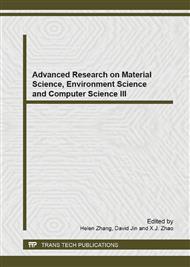p.633
p.637
p.642
p.646
p.650
p.655
p.660
p.664
p.668
Research on Image Technology with Progressive Image Compression Based on JPEG and Laplacian Pyramid
Abstract:
Progressive image transmission is a kind of image technology has been widely used in various fields, it can not only save bandwidth but also improve the user experience to meet user demand for different image quality. According to user's demand for image quality, realizing the progress of image compression coding flow can meet the demand of users. This article mainly introduce by means of JPEG and Laplacian pyramid coding principle implement progressive image compression.
Info:
Periodical:
Pages:
650-654
Citation:
Online since:
January 2014
Authors:
Keywords:
Price:
Сopyright:
© 2014 Trans Tech Publications Ltd. All Rights Reserved
Share:
Citation:


